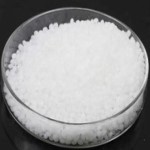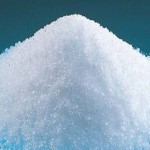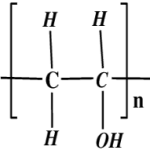Polyvinyl Acetate USP NF BP Ph Eur FCC Food Grade & Polyvinyl Alcohol USP BP Ph Eur Grade Suppliers Exporters, Manufacturers
Polyvinyl Acetate
CAS Number: 9003-20-7 USP NF BP Ph Eur FCC Food Grade Suppliers Exporters, Manufacturers

Please visit Safety Data Sheet of Polyvinyl Acetate USP NF BP Ph Eur FCC Food Grade Manufacturers.
Specifications of Polyvinyl Acetate USP NF Grade:
(C4H6O2 )n
Vinyl acetate homopolymer
Vinyl acetate resin --- CAS 9003-20-7.
DEFINITION
Polyvinyl acetate is a thermoplastic polymer, represented by the formula: (C4H6O2 )n in which the value of n lies between approximately 100 and 17,000.
IDENTIFICATION
A. Procedure:
Sample: 100 mg of Polyvinyl Acetate
Analysis: Dissolve the Sample in 2.5 mL of acetone, place two drops on a potassium bromide plate, and dry to evaporate the solvent.
Acceptance criteria: IR absorption spectrum.
B. Procedure:
Sample: 0.5 g of Polyvinyl Acetate
Analysis: Saponify the Sample in a mixture of 25.0 mL of 0.5 N alcoholic potassium hydroxide and 25.0 mL of water.
Acceptance criteria: The solution so obtained meets the requirements of the tests for Acetate.
Residue on Ignition: NMT 0.1%
Residual Peroxides:
Sample: 0.85 g of Polyvinyl Acetate
Analysis: Place the Sample in a borosilicate glass flask with a ground-glass neck. Add 10.0 mL of ethyl acetate, and heat under a reflux condenser with constant agitation. Allow to cool. Replace the air in the container with oxygen-free nitrogen and add a solution of 1.0 mL of glacial acetic acid and 0.5 g of sodium iodide in 40.0 mL of water. Shake thoroughly and allow to stand protected from light for 20 min. Titrate with 0.005 N sodium thiosulfate until the yellow color is discharged. Perform a blank titration.
Acceptance criteria: The difference between the titration volumes is not greater than 1.0 mL; and NMT 100 ppm, calculated as hydrogen peroxide, is found.
Limit of Vinyl Acetate: To pass the test.
Fats and Fixed Oils: To pass the test --- The acid value is NMT 0.5.
Fats and Fixed Oils: To pass the test --- The ester value, calculated from the Saponification Value and the Acid Value, is between 615 and 675.
Loss on Drying: Dry 1.5 g at 100C for 2 h in a vacuum: it loses NMT 1.0% of its weight.
Average Molecular Weight and Molecular Weight Distribution: To pass the test --- The values of weight-average molecular weight and polydispersity are, respectively, NLT 85% and NMT 115% of their respective values as stated on the label.
Specifications of Poly(vinyl acetate) BP Ph Eur Grade
Ph Eur
DEFINITION
Poly(vinyl acetate) is a thermoplastic polymer obtained by polymerisation of vinyl acetate using a suitable starter, without solvent or with water or 2-propanol. The vast majority of the acetate moieties are attached to non-neighbouring carbon atoms of the chain. The index n is about 100 - 17 000. The relative molecular mass lies between 10 000 and 1500 000. The viscosity is 4 to 250 mPas. The ester value, which characterises the degree of hydrolysis, is 615 to 675.
CHARACTERS
Appearance: White or almost white powder or colourless granules or beads.
Solubility: Practically insoluble in water, freely soluble in ethyl acetate, soluble in alcohol. It is hygroscopic and swells in water. It softens at temperatures above 40-50C.
IDENTIFICATION
A. Infrared absorption spectrophotometry. To pass the test.
B. It complies with the test for viscosity (see Tests).
C. Saponify 0.500 g in a mixture of 25.0 ml of 0.5 M alcoholic potassium hydroxide and25.0 ml of water. The solution obtained gives the reaction of acetates.
TESTS
Solution S: Suspend 50.0 g in 100 ml of ethyl acetate R in a borosilicate glass flask with a ground-glass neck. Heat under a reflux condenser with constant stirring for 30 min. Allow to cool. Filter through a tared sintered glass filter (16) (2.1.2) and wash the residue with 50.0 ml of ethyl acetate, pour the filtrate into a 250 ml graduated flask. Dilute to 250 ml with ethyl acetate.
Appearance of solution: Solution S is clear and colourless.
Viscosity: 85 per cent to 115 per cent of the value stated on the label.
Determine the viscosity immediately after preparation of solution S at 20± 0.1C by using a rolling ball viscosimeter.
Acid value: Maximum 2.0, determined on 5.0 g dissolved in 50 ml of alcohol by shaking for 3 h.
Ester value: 615 to 675.
Saponify 0.500 g in a mixture of 25.0 ml of 0.5 M alcoholic potassium hydroxide and 25.0 ml of water.
Residual peroxides: Maximum 100 ppm, calculated as hydrogen peroxide.
Vinyl acetate: maximum 0.3 per cent to meet the test.
Heavy metals: Maximum 10 ppm.
Loss on drying: Maximum 1.0 per cent, determined on 1.000 g by drying in an oven at 105C.
Sulphated ash: Maximum 0.1 per cent, determined on 1.0 g.
Specifications of Polyvinyl Acetate FCC Food Grade
CAS: 9003-20-7]
DESCRIPTION
Polyvinyl Acetate occurs as a clear, water white to pale yellow, solid resin. It is prepared by the polymerization of vinyl acetate. After completion of polymerization, the resin is freed of traces of residual catalyst (usually a peroxide), monomer, and/or solvent by vacuum drying, steam sparging, washing, or any combination of these treatments. The resin is soluble in acetone, but it is insoluble in water.
REQUIREMENTS
Identification: The infrared absorption spectrum of a melted sample on a potassium bromide plate exhibits relative maxima at the same wavelengths as those of a typical spectrum as shown in the section on Infrared Spectra, using the same test conditions as specified therein.
Free Acetic Acid: Not more than 0.05%.
Lead: Not more than 3 mg/kg.
Loss on Drying: Not more than 1.0%.
Molecular Weight: Not less than 2000.

Please visit Hazard Statement of Polyvinyl Acetate USP NF BP Ph Eur FCC Food Grade Suppliers.
Polyvinyl Alcohol
CAS Number: 9002-89-5 USP BP Ph Eur Grade Suppliers Exporters, Manufacturers

Please visit Safety Data Sheet of Polyvinyl Alcohol USP BP Ph Eur Grade Manufacturers.
Specifications of Polyvinyl Alcohol USP Grade
(C2H4O)n
Ethenol, homopolymer.
Vinyl alcohol polymer CAS Number 9002-89-5.
Polyvinyl Alcohol is a water-soluble synthetic resin, represented by the formula: (C2H4O)n in which the average value of n lies between 500 and 5000. It is prepared by 85 percent to 89 percent hydrolysis of polyvinyl acetate. The apparent viscosity, in centipoises, at 20C, of a solution containing 4 g of Polyvinyl Alcohol in each 100 g is not less than 85.0 percent and not more than 115.0 percent of that stated on the label.
pH: between 5.0 and 8.0, in a solution (1 in 25).
Loss on drying: Dry it at 110 to constant weight: it loses not more than 5.0% of its weight.
Residue on ignition: not more than 2.0%.
Water-insoluble substances: 0.1%.
Degree of hydrolysis: to meet the requirement.
Specifications of Poly(vinyl alcohol) or Poly vinyl alcohol BP Ph Eur Grade
Poly(vinyl alcohol) is obtained by polymerisation of vinyl acetate, followed by partial or almost complete hydrolysis of poly(vinyl acetate) in the presence of catalytic amounts of alkali or mineral acids.
Poly(vinyl alcohol) polymers comply with the following indices:
The mean relative molecular mass lies between 20 000 and 150 000. The viscosity is 3 to 70
mPas. The ester value which characterises the degree of hydrolysis is not greater than 280.
CHARACTERS
Appearance: Yellowish-white powder or translucent granules.
Solubility: Soluble in water, slightly soluble in ethanol, practically insoluble in acetone.
Various grades of poly(vinyl alcohol) are available. They differ in their degree of polymerisation and their degree of hydrolysis which determine the physical properties of the different grades. They are characterised by the viscosity and the ester value of the substance.
IDENTIFICATION
A. Infrared absorption spectrophotometry: To pass the test.
Preparation Discs; in some cases, the sample has to be milled, after cooling if necessary, before preparing the discs.
The spectrum obtained shows absorption maxima corresponding to poly(vinyl alcohol) at 2940 cm-1 and 2920 cm-1.
B. It complies with the test for viscosity (see Tests).
TESTS
Solution S: Heat on a water-bath 250 ml of water R in a borosilicate round-bottomed flask attached to a reflux condenser with stirrer, add 10.0 g of the substance to be examined and continue heating for 30 min with continuous stirring. Remove the flask from the water-bath and continue stirring until room temperature is reached.
Appearance of solution: Solution S is clear and not more intensely coloured than reference solution.
pH: 4.5 to 6.5 for solution S.
Viscosity: 85 per cent to 115 per cent of the value stated on the label.
Determine the viscosity using a falling ball viscometer immediately after preparation of solution S at 20±0.1C.
Acid value: Maximum 3.0.
Ester value: 90 per cent to 110 per cent of the value stated on the label.
Heavy metals: Maximum 10 ppm.
Loss on drying: Maximum 5.0 per cent, determined on 1.000 g by drying in an oven at 105C for 3 hr.
Sulphated ash: Maximum 1.0 per cent, determined on 1.0 g.

Please visit Hazard Statement of Polyvinyl Alcohol USP BP Ph Eur Grade Suppliers.
Polyvinyl Acetate CAS Number 9003-20-7 & Polyvinyl Alcohol CAS Number 9002-89-5 Supplier Exporter, Manufacturer:
Annie Chemie P Ltd
Mumbai 4000010, INDIA
With Agents and offices in UAE, USA, Europe.
e-mail: info@anniechemie.com
Copyright and Usual Disclaimer is Applicable.
June 1, 2025
Exporters to USA, Canada, UK, Europe, UAE, Nigeria, Algeria, Turkey, Mexico, Brazil, Chile, Argentina, Australia, Dubai etc.
Perfection is made up of small things and that is a big thing.
